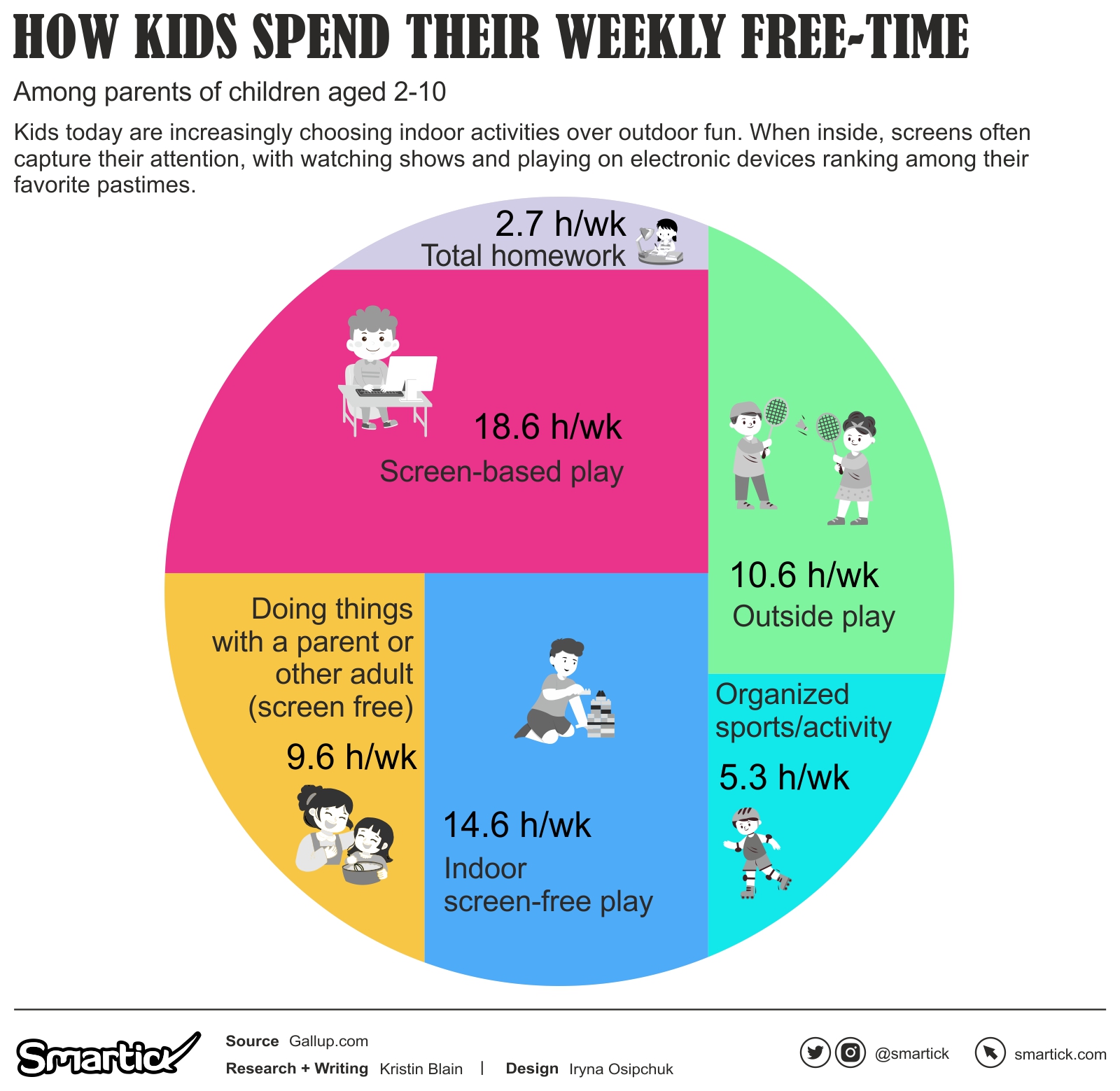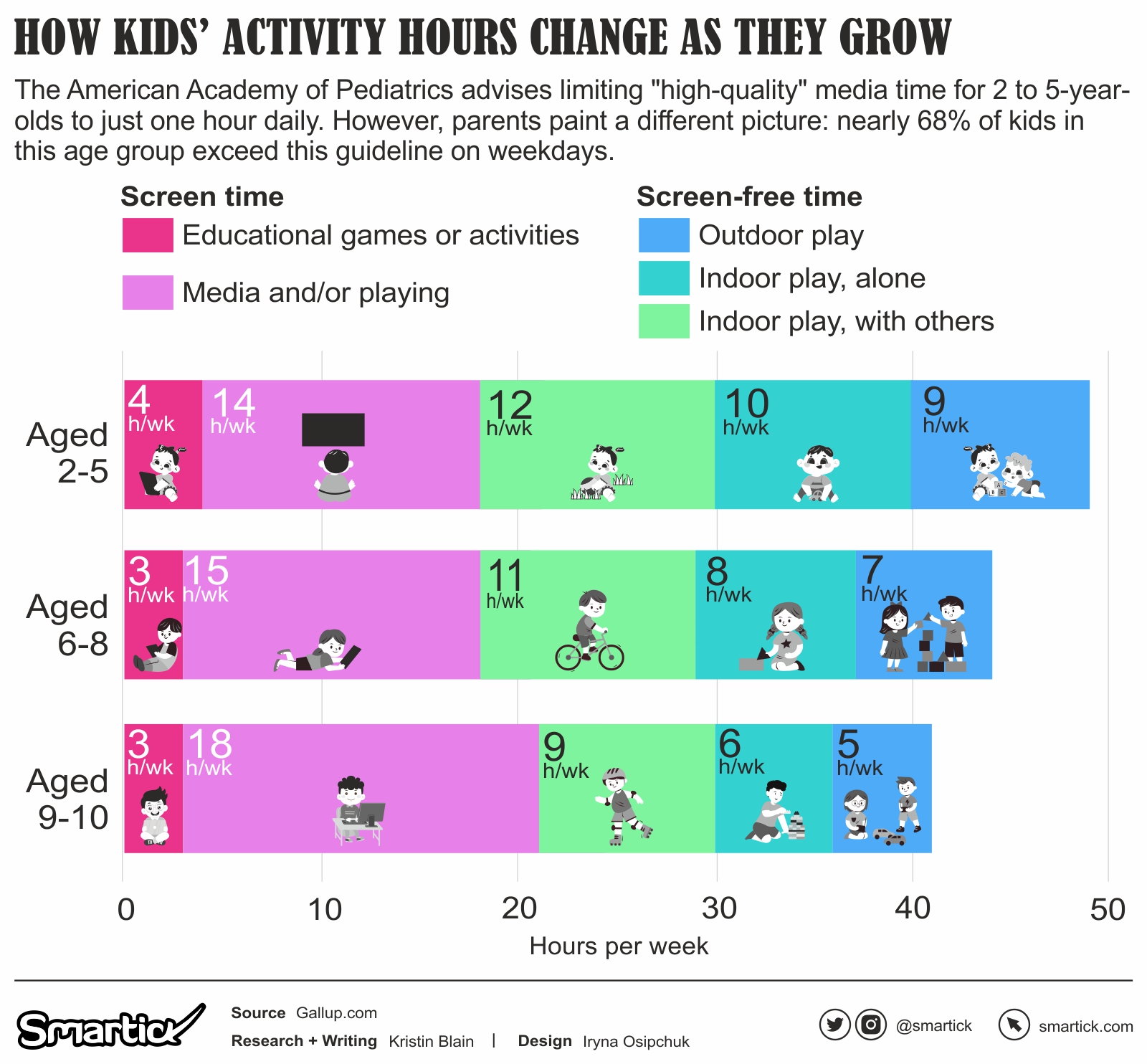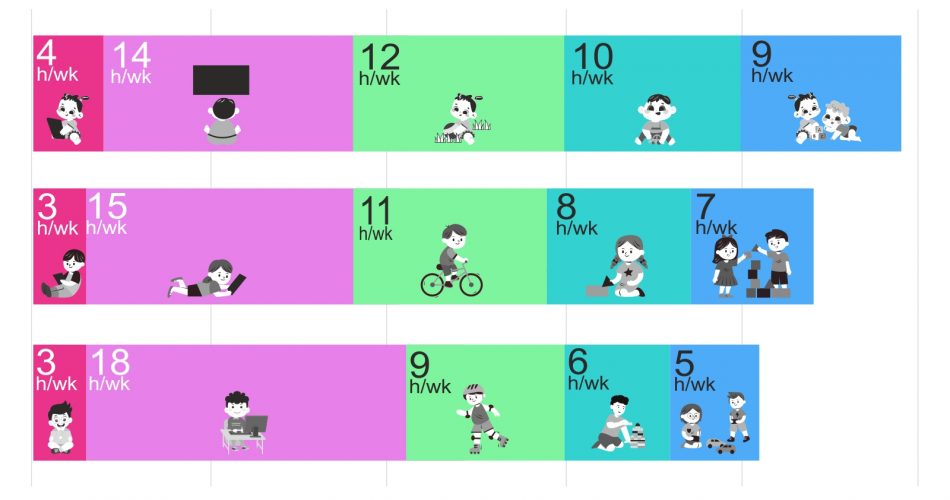
Gallup, in collaboration with a renowned toy company, embarked on a study to understand parents’ perspectives on play in the lives of children aged birth to 10. Based on feedback from over 1,200 U.S households, the “Time to Play” study showcases a prevailing trend. While parents understand the necessity of curtailing screen time and endorsing outdoor activities, technology frequently takes precedence in indoor child-led play. This pattern suggests children might be sidelining crucial developmental experiences.

Data on American children aged 2-10 reveals an increasing preference for screen-based activities. Here’s a concise breakdown:
- Screen-based play: Children are glued to screens for an average of 18.6 hours a week.
- Indoor screen-free play: This stands at about 14.6 hours per week, showcasing that screens have a bigger pull when indoors.
- Outside Play: Children do ensure some outdoor activities with 10.6 hours weekly.
- Parental Interaction (Screen-free): About 9.6 hours each week are reserved for child-parent or child-adult interactions.
- Organized Activities: Structured activities, like sports or lessons, take up 5.3 hours.
- Homework: Educationally, they spend 2.7 hours on homework weekly.
Interestingly, parents aren’t thrilled about this. Over 60% wish for their children to reduce screen time. Yet, the primary barrier is the child’s preference for screens. As many as 58% of parents identified their child’s fondness for electronic devices and media as the main hurdle to more screen-free indoor play.
How Age Influences Screen Time
As children grow, their screen interactions and play habits undergo evident changes. Here’s a deep dive into how age influences a child’s preference for screen time and different play activities

Children in the 2-5 age bracket are still exploring the digital world, averaging 18 hours of screen time a week. Their preference leans more towards the outdoors, with 12 hours dedicated to outside play. While they do spend time indoors, it’s diversified; they engage in solo activities for about 10 hours weekly and play with others for approximately 9 hours. It’s a balanced mixture of screen and non-screen interactions, but already, the allure of screens is evident.
As children transition to the 6-8 age group, their screen time remains steady at 18 hours weekly, showcasing a persistent interest in digital activities. Their outdoor playtime experiences a slight reduction, falling to 11 hours a week. Indoor activities shift as well; solo play is at 8 hours each week, and group playtime is about 7 hours. The consistent screen time, even as other activities reduce, underscores the captivating nature of digital devices.
Approaching their pre-teen years, children aged 9-10 show a marked increase in their screen interactions, spending an average of 21 hours a week on devices. Outdoor activities see a notable dip, with only 9 hours being dedicated to outside play. Indoor solo play further reduces to 6 hours a week, and playtime with peers stands at 5 hours weekly. As children near adolescence, the digital world evidently occupies a more central role in their lives.
The Subtle Impacts of Screen Time
A recent study investigated screen time’s implications on developmental milestones. Prolonged exposure to screens at age 1 appeared to correlate with developmental lags in areas like communication and problem-solving by ages 2 and 4. However, the study had its limitations. Notably, it couldn’t distinguish between educational screen time and other types, a factor that might have nuanced the findings significantly.
Guidelines for Screen Time
In today’s digital era, many parents find themselves questioning how much screen time is appropriate for their children. The American Academy of Pediatrics (AAP) has provided guidelines to help parents navigate this essential aspect of modern parenting.
Under Age 2 Years Old
- Very limited screen time recommended.
- Main exception: video chatting.
- For children 18 to 24 months: High-quality media can be introduced but should be viewed with an adult present.
Ages 2 to 5
- Limit screen time to one hour per day.
- Focus on “interactive, nonviolent, educational and pro-social” media.
- Adults should co-view and discuss content.
Ages 5 to 8
- No strict daily screen time limit.
- Parents should monitor to ensure screen time doesn’t affect essential activities like sleep and exercise.
- Ensure content viewed is safe and healthy.
Ages 9+
- Media usage should be more of a conversation between parents and children.
- The AAP encourages discussing how media is used, what is viewed, and the learnings from it.
In the age of technology, screens undeniably play a significant role in children’s lives. Yet, the essence of child-led, screen-free play cannot be overshadowed. While the convenience and allure of screens are undeniable, the benefits of unstructured, imaginative play are irreplaceable.
The balance between screen-based and screen-free activities is a dance every parent is learning. Informed decisions, backed by research and guidelines, can help ensure children get the best of both worlds.

